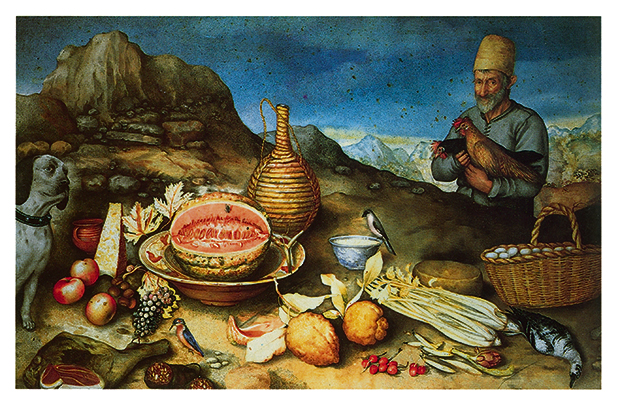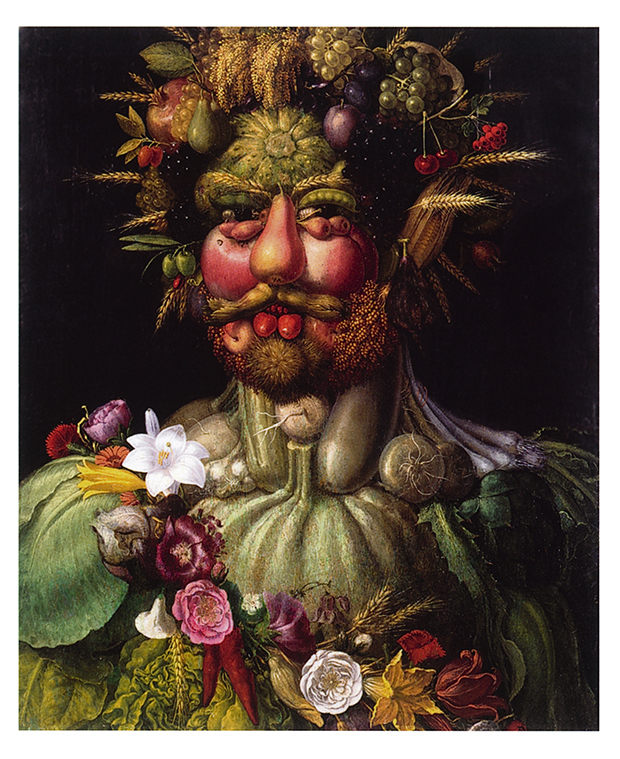Food in Art – book review: a peek inside the great larder of art history
If it wasn’t so inconvenient to bring a chunky hardback art book on an Easyjet flight, I’d suggest Gillian Riley’s Food in Art: From Prehistory to the Renaissance as a ‘top holiday read of 2015’.
A museum gift-shop buy with an academic styling, it doesn’t look or feel the part.
But what better than to read up on the origins of pesto while lazing on the Italian coasts, or peek inside the tomb of the wealthy ancient Egyptian scribe Nebamun (the real thing is on show at the British Museum), from the banks of the Nile?
Authoritative as it ought to be – Riley is a leading food writer and historian – this is a book about the mystery as much as the certainties of art’s centuries-old relationship with food.
With her guidance we discover what’s missing from our collective knowledge and the question marks over the meaning of the preparation, preservation and consumption of food in an array of artworks.
Few would be better placed than Riley to fill in the gaps using her expansive imagination.
Riley answers questions I never knew I had about the great larder of art history; such as why the men of ancient Mesopotamia drank their beer with a straw, or why the Renaissance botanist Ulisse Aldrovandi commissioned a portrait of his pet monkey clutching an artichoke.
And there are lessons aplenty to be learned, starting with the wisdom of Paleolithic cave painters; hunters for whom meat was never blindly taken for granted, but the subject of awe and intricate study in a time when “animals ruled the earth, and man was a puny creature”.
Riley’s sixth book examines the countless layers of symbolism in the many meals of art history, as depicted in all forms from ancient wall paintings, fine art, mosaics, and frescoes to illuminated manuscripts and stained glass.
For those familiar with the author’s food columns in the Hackney Citizen, documenting intrepid culinary adventures in her Stoke Newington kitchen, expect the same hunger-inducing, poetic prose, and even more to learn here.
It’s a handy volume for those of us who need a narrow lens with which to recall forgotten history lessons, organised into snippets that can be dipped in and out of with ease.
Perhaps unwittingly, Riley’s descriptions of the micro-breweries of Mesopotamia offer much-needed perspective on contemporary foodie culture, reminding us that making your own beer is neither a laughable hipster fad nor a unique cultural advancement of our generation – it’s just something humans have done for thousands of years.
And as for the humble cabbage, its varied role as artistic muse deserves a chapter all of its own, as we discover its long lost identity as a celebrated preventer of hangovers. And, then, ridiculously, as temporary placeholders for the heads of the sick in 15th century psychological experiments – not to be tried at home.
Filtered through Riley’s irreverent, witty and ever-imaginative style, Food in Art is a guide through the sprawling past of art’s many interpretations of food, from the divine to the profound, and crucially the dark, humorous and absurd.
From the practicality of Ancient Egyptian illustrated breadmaking techniques, to the strange vanity of Roman mosaic floors designed to look covered in the remnants of a lavish banquet, mice and all, Food in Art calls for some self-reflection.
It’s a good opportunity to take a good long look at our ‘selfies with Spiralizer’, or the meaning behind Instagrammed kale salads of the 21st century. Rewriting Riley’s book in a thousand years’ time, what will the food historians make of us?
Surely, as ever, we’ll be seen as we are; very vain, a bit clever and somewhat ridiculous.
Food in Art: From Prehistory to the Renaissance is published by Reaktion Books. RRP: £30. ISBN: 9781780233628


